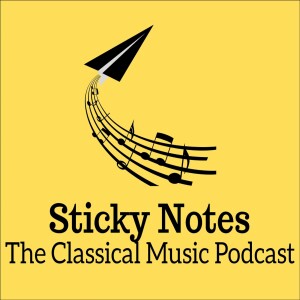
I’m not sure there’s ever been a composer who changed as much throughout his or her life as Arnold Schoenberg. Schoenberg would become famous, or infamous, depending on who you talk to, for his invention of atonality; the equalization of all keys so that the system of harmony that had been followed, in one way or another, in Western music for nearly a thousand years, was banished.
This invention radically changed the course of contemporary classical music, and it remains controversial to this day. Some people think Schoenberg ruined classical music forever with this invention, while others say he liberated it from convention.
But all of these inventions were in the future for Arnold Schoenberg when he wrote his Verklarte Nacht, or Transfigured Night, for string sextet. This piece, written in just 3 weeks in 1899, is hyper-Romantic in every sense and burning with passion and yearning, as well as being almost hyper tonal throughout. It is based on a poem by the German poet Richard Dehmel called Transfigured Night and is an example of a composition that is inextricably linked to the text it was based on, despite the music being wordless. Almost every moment in the score can be linked to a line of Dehmel’s poem, which is just as full of passion and yearning as the music. So today I’ll take you through the piece and the poem in parallel, showing you the links between the two, and also trying to pick apart the remarkable complexity within Schoenberg’s writing, all of which serves to whip up one of the most emotionally dramatic and compelling pieces of chamber music ever written. If you’ve ever been a skeptic of Schoenberg, this just might be the piece for you. Join us!
More Episodes
 2022-09-29
2022-09-29
 2022-09-22
2022-09-22
 2022-09-15
2022-09-15
 2022-09-08
2022-09-08
 2022-07-28
2022-07-28
 2022-07-21
2022-07-21
 2022-07-07
2022-07-07
 2022-06-30
2022-06-30
 2022-06-23
2022-06-23
 2022-06-09
2022-06-09
 2022-06-02
2022-06-02
 2022-05-26
2022-05-26
 2022-05-19
2022-05-19
 2022-05-12
2022-05-12
 2022-05-05
2022-05-05
 2022-04-28
2022-04-28
Create your
podcast in
minutes
- Full-featured podcast site
- Unlimited storage and bandwidth
- Comprehensive podcast stats
- Distribute to Apple Podcasts, Spotify, and more
- Make money with your podcast
It is Free
- Privacy Policy
- Cookie Policy
- Terms of Use
- Consent Preferences
- Copyright © 2015-2024 Podbean.com




